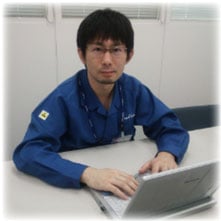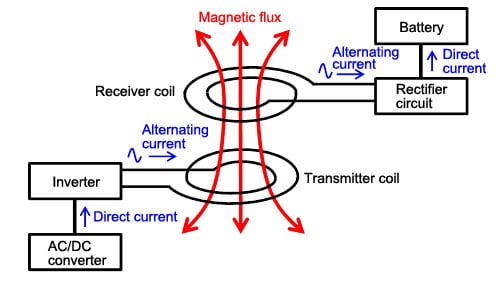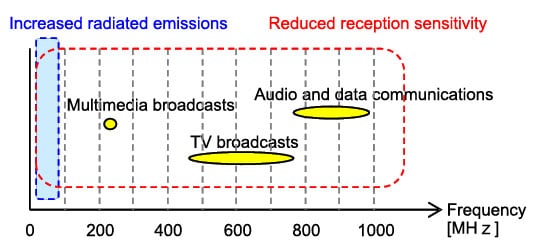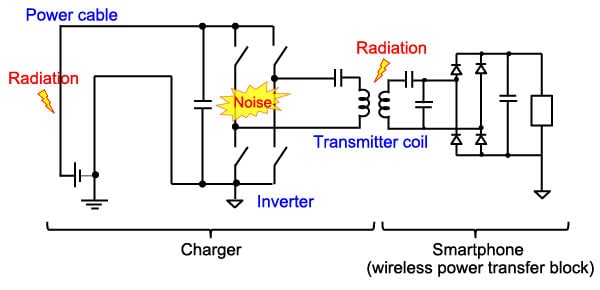Noise Suppression Products / EMI Suppression Filters / ESD Protection Devices

Noise Suppression Filter Guide
In this series we will introduce explanations by engineers regarding noise suppression techniques for a variety of applications. This first explanation focuses on noise suppression solutions for wireless power transfer. It is in two parts and in the format of a question-and-answer session with an engineer working in development.

A.
I have been at Murata for 11 years, during which I have worked on the development of fabrication methods using thin-film processes, the design of SAW filters, and the design of modules utilizing SAW filters and coils.
Currently I am engaged in work related to the establishment of noise suppression techniques using coils for a variety of electronic devices. When electronic devices such as smartphones and televisions are exposed to noise, they can malfunction or become unable to receive wireless signals.
For this reason, large numbers of noise suppression products are used in electronic devices, both to prevent them from emitting noise and to prevent malfunctions should noise get inside them.
However, simply using a lot of noise compression components will not provide the desired effect. In order to resolve noise problems it is necessary to understand the noise interference mechanism and use the appropriate part in the appropriate location to deal with it. This is why we work together with our customers to resolve their noise problems, and we purchase products on the market to analyze their noise issues and investigate noise suppression techniques. Most recently, I have been focusing on noise suppression techniques for wireless chargers used with smartphones.
A.
As the name implies, wireless power transfer is a technology that transfers power wirelessly. Unlike conventional charging methods, where you plug a power cable into your smartphone to charge it, with wireless charging you simply place the smartphone on a charging pad and the battery charges automatically.
As shown in Figure 1, the principle of electromagnetic induction is used to perform charging. An alternating current flowing through a coil in the charger (transmitter side) generates magnetic flux. This magnetic flux creates a link to a coil in the smartphone (receiver side) and causes an induced current to flow.

A.
As shown in Figure 2, wireless chargers create two types of noise problems: ① they produce large radiated emissions (noise emitted into the air) in the low-frequency band below 100 MHz during charging; and ② this can adversely affect reception sensitivity for television broadcasts or audio and data communications while charging is in progress. This means that during charging it may not be possible to receive One-Seg TV broadcasts, calls, or e-mails.

A.
We found that the noise source was the inverter being driven at approximately 100 kHz. This had harmonic components extending up to nearly 1 GHz, and it was causing a variety of noise problems. We also monitored noise radiated by the power cable as radiated emissions and determined that noise radiated by the transmitter coil was becoming linked to the smartphone antenna and suppressing reception sensitivity.

How were you able to deal with these types of noise? We look forward to hearing about effective approaches to noise suppression in Part 2.
Department Responsible: Application Development Sec. Product Development Dept. EMI Filter Division, Murata Manufacturing Co., Ltd.
The information presented in this article was current as of the date of publication. Please note that it may differ from the latest information.